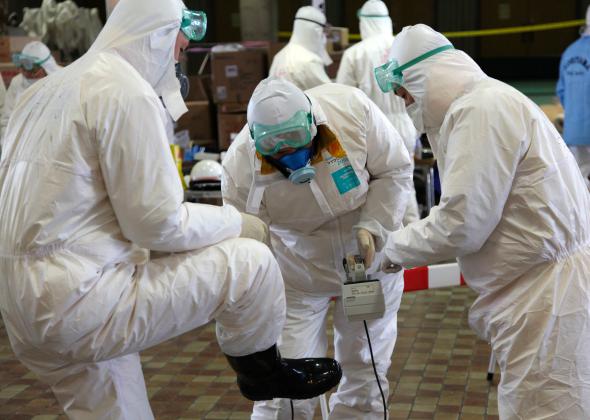Drone U Podcast: Journalists Could've Used Drones in Fukushima

Photo by GO TAKAYAMA/AFP/Getty Images
Every week on Future Tense, we highlight a talk from Drone U in which a leading thinker speaks about what our drone future may look like. Drone U is produced in cooperation with the New America Foundation. (Future Tense is a partnership of Slate, the New America Foundation, and Arizona State University.)
This week, Drone U features a podcast from Matthew Schroyer, creator of the website DroneJournalism.org and a founding member of the Professional Society of Drone Journalists. Schroyer discusses the ways that journalists are using drones, how they can be used as a check on government power, and efforts to ensure that journalists use them in an ethical manner.
Often, the press is at the mercy of governments to provide data on natural disasters, pollution, and other issues, and that information can be manipulated or withheld. Take drones’ role in the response to the Fukushima disaster. In the aftermath of the nuclear catastrophe, the U.S. flew a Global Hawk with an infrared sensor over Fukushima to provide the Japanese government with data on the severity of the meltdown. However, the Japanese government failed to provide that data to its people, and subsequent investigations found that some of the information that was made public may have been misleading. But what if journalists had been able to operate their own drones during the incident?
Join us on Dec. 4 for the next episode from Drone U.
Future Tense is a partnership of Slate, New America, and Arizona State University.
